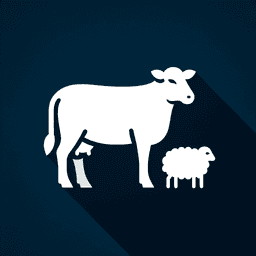
Livestock: Definition, Types, and Examples
February 27, 2025
Glossary Entry: Livestock
Definition: Livestock refers to domesticated animals raised in an agricultural setting to produce commodities such as food, fiber, and labor. Common examples include cattle, sheep, goats, pigs, and poultry.
Relevance to Maritime Users: While livestock is primarily associated with agriculture, it holds significance in maritime contexts, particularly in the transportation and trade sectors. Historically, ships have been used to transport livestock across seas, facilitating international trade and the exchange of agricultural goods.
Livestock Transportation: The transportation of livestock by sea requires specialized vessels known as livestock carriers. These ships are equipped with facilities to ensure the welfare of animals during transit, including ventilation systems, feeding arrangements, and veterinary care. The safe and humane transport of livestock is governed by international regulations to prevent stress and injury to the animals.
Maritime Regulations: International maritime organizations have established guidelines to ensure the ethical treatment of livestock during sea transport. These regulations cover aspects such as space allocation, ventilation, feeding, and watering, as well as emergency procedures in case of adverse conditions.
Economic Impact: The maritime transport of livestock contributes significantly to the global economy by enabling the export and import of meat and other animal products. This trade supports agricultural industries worldwide and provides a vital link between producers and consumers across different continents.
Environmental Considerations: The shipping of livestock also raises environmental concerns, such as emissions from vessels and the potential spread of diseases. Efforts are being made to develop more sustainable practices in the maritime transport of livestock to minimize environmental impact.
Understanding Livestock in Maritime Context
Livestock in the maritime industry refers to the transportation of live animals across seas using specialized vessels known as livestock carriers. These ships are designed to ensure the safe and humane transport of animals such as cattle, sheep, and goats.
What is the Meaning of Livestock in Shipping?
In the context of shipping, livestock refers to the process of transporting live animals from one location to another via sea. This involves ensuring the animals' safety and well-being throughout the journey, which includes activities such as loading, unloading, and handling of the animals.
What is the Capacity of a Livestock Ship?
Livestock ships vary in size and capacity. Medium-sized vessels can typically carry about 30,000 to 40,000 sheep or 3,000 to 4,000 head of cattle. Larger vessels, especially those approved by the EU, can transport up to 18,000 cattle or 75,000 sheep.
What are the Different Types of Livestock Transport?
Livestock can be transported by road, rail, ship, or air. When it comes to maritime transport, there are two main types of livestock carriers: open-pen and closed-pen. These ships are equipped with features such as fodder storage, ventilation systems, and waste disposal systems to ensure the animals' comfort and safety.
What is the Purpose of a Livestock Ship?
The primary purpose of a livestock ship is to transport live animals across seas. These vessels are equipped with specialized features to accommodate the needs of the animals, including storage for food and water, ventilation systems, and waste disposal mechanisms. They also have ramps and accommodations for the crew tending to the animals.
Livestock shipping is a critical component of the global food supply chain, enabling the movement of animals for breeding, slaughter, and other purposes. Despite its importance, it is often a subject of debate due to concerns about animal welfare and safety during transport.




